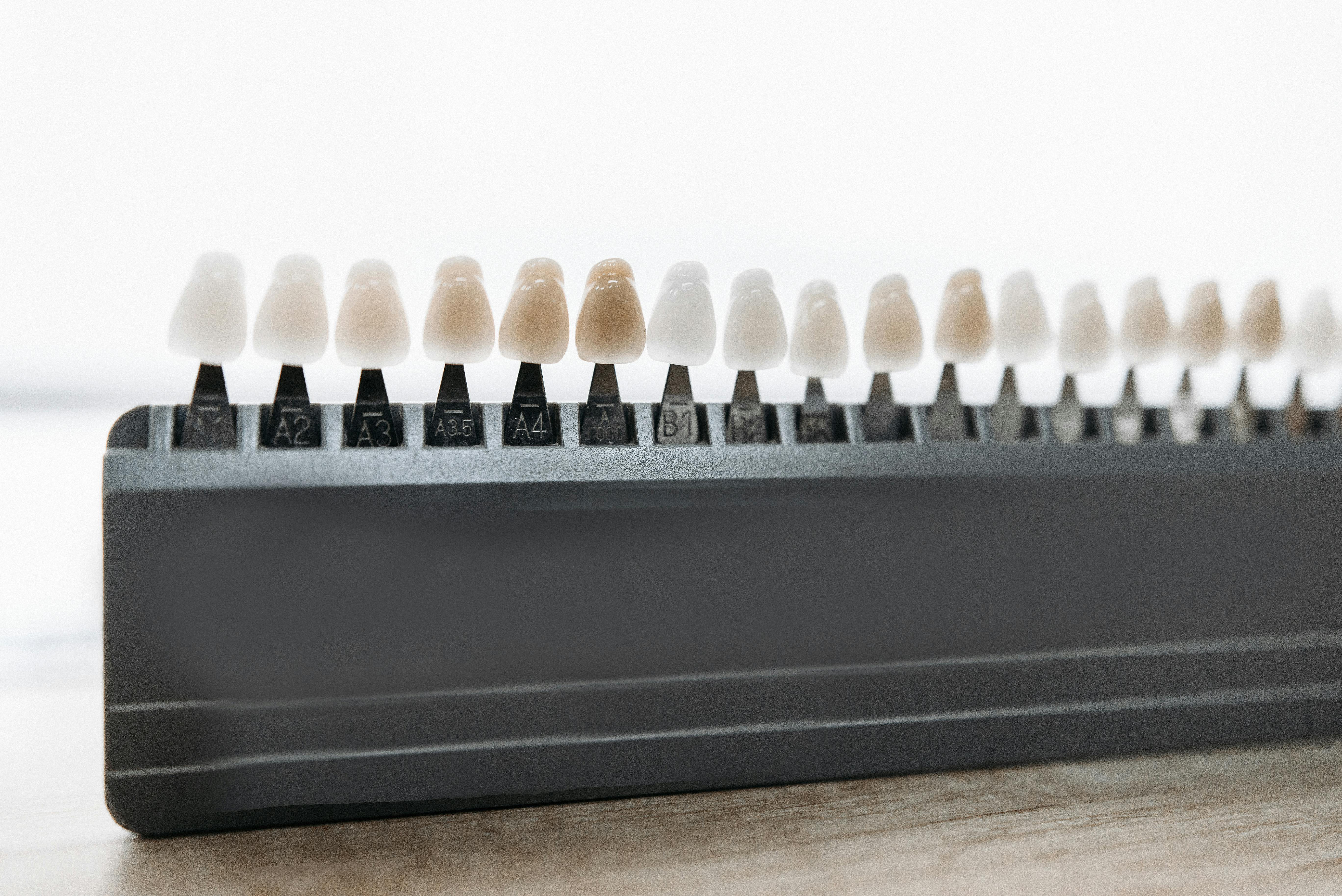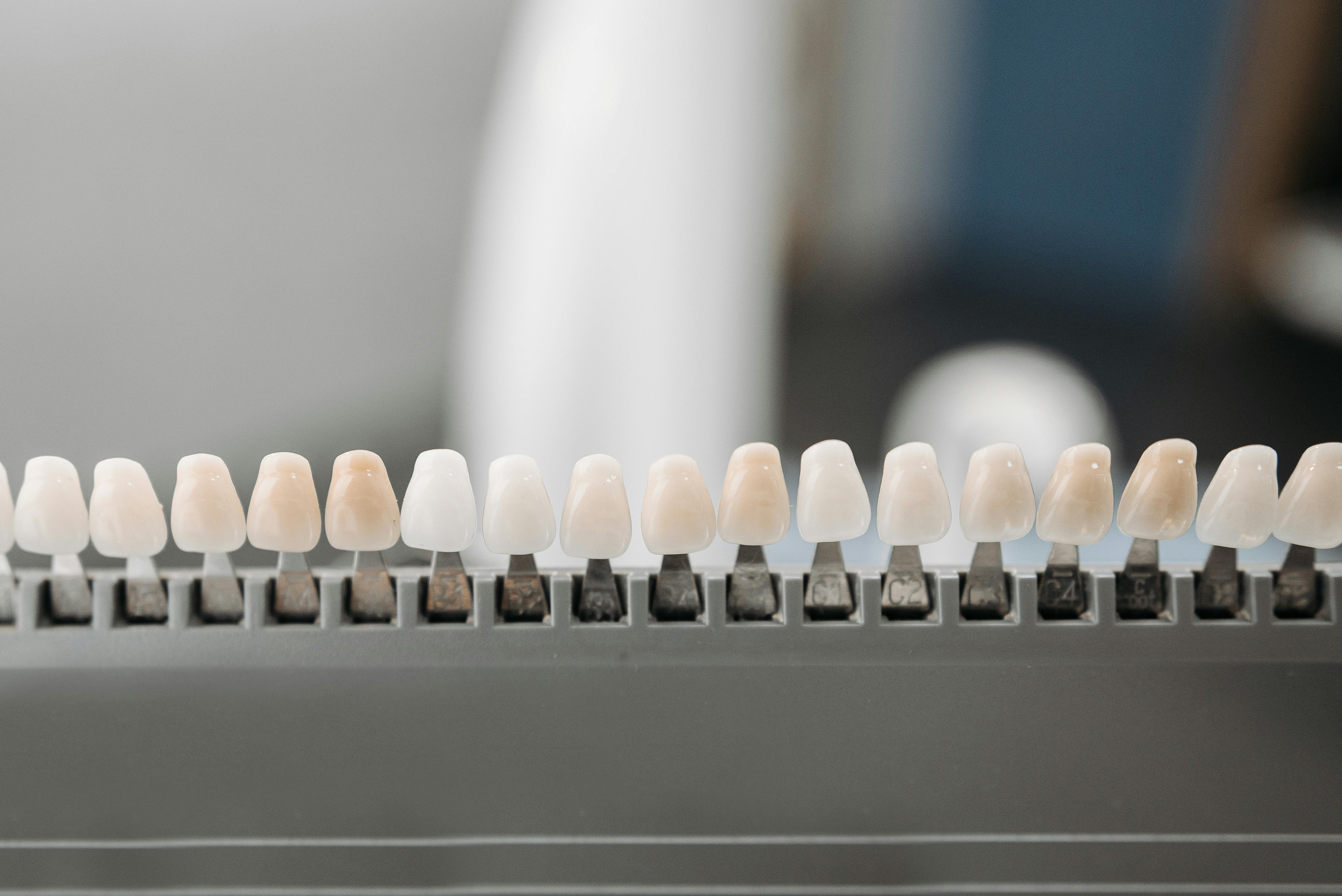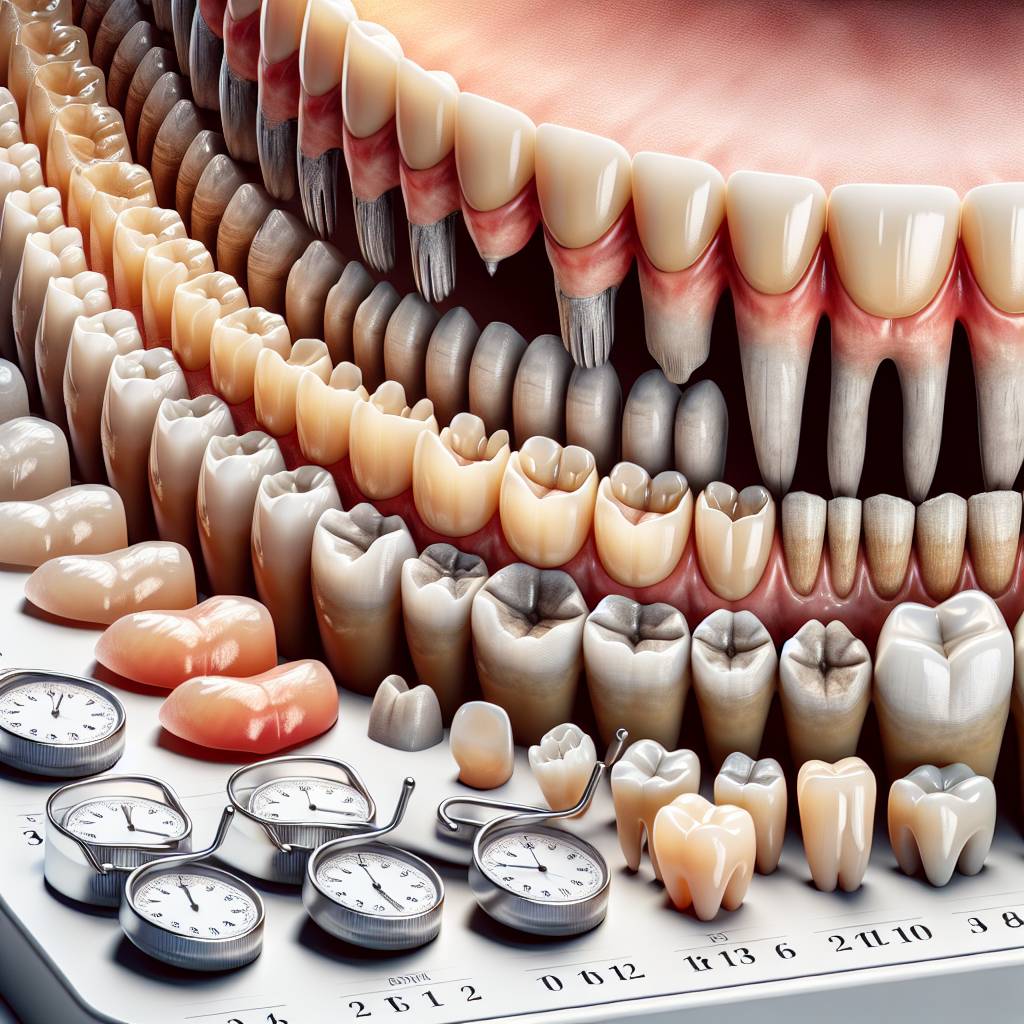Veneers are a popular cosmetic dental solution for individuals looking to improve their smile. Veneers are thin shells of porcelain or composite resin that are bonded to the surface of the teeth. They can be used to fix chips, discoloration, and misalignment, giving you a beautiful smile in no time. But how long do veneers last on your teeth? This article will provide an overview of what you can expect from veneer longevity and how to keep them looking great for years to come.Veneers can last anywhere from 5 to 20 years depending on how well you care for them. With proper oral hygiene and regular dental visits, your veneers should last the full 20 years. If the veneers are damaged or become discolored, it is possible to replace them if needed.
Factors That Affect The Lifespan Of Veneers On Teeth
Veneers are thin shells of ceramic or porcelain that are bonded to the front of teeth to improve their appearance. They can be used to whiten teeth, close gaps, and repair chips or cracks. While veneers typically last between 10 and 15 years, there are several factors that can affect their lifespan.
The quality of materials used for the veneers is one of the most important factors in determining how long they will last. Veneers made with high-quality materials generally last longer than those made with lower-quality materials. It is important to ensure that the dentist you choose uses high-quality materials for your veneers.
The amount of preparation done to your teeth before the veneers are applied is also important. If too much enamel is removed from your teeth during preparation, the bond between the veneer and your tooth may not be strong enough, leading to a shorter lifespan for the veneer. It is also important that your dentist takes accurate measurements of your teeth before applying the veneers so that they fit properly and don’t shift over time.
Your personal care habits can also affect how long your veneers last. Poor oral hygiene can lead to decay underneath the veneer which can weaken its bond and cause it to become loose or fall off prematurely. Additionally, habits such as grinding or clenching your teeth can cause excessive wear on the veneer, leading it to become weaker over time.
Finally, how you use your teeth can affect how long they last as well. If you use them to bite down hard objects such as nuts or ice cubes, this could damage or crack a veneer leading it to need replacement sooner than expected. It is best to avoid biting down on hard objects when possible when you have veneers on your teeth.
By following these tips and consulting with a dental professional if necessary, you can help extend the lifespan of your veneers and keep them looking beautiful for years to come!
What Are The Benefits Of Veneers On Teeth?
Veneers are a popular choice for many people who want to improve the appearance of their teeth. Veneers are thin shells applied directly to the front surface of your teeth to make them look more aesthetically pleasing. Whether you want to fix chips, discoloration, or gaps between your teeth, veneers can provide a solution that will help you achieve the look you desire.
One of the main benefits of veneers is their ability to create an even and attractive smile. Veneers can be used to address a variety of cosmetic issues such as stained or discolored teeth, unevenly shaped or sized teeth, and even gaps between teeth. With veneers, you can achieve a beautiful smile that looks natural and healthy.
Another benefit of veneers is that they are durable and long-lasting. The material used for veneers is strong and resistant to staining and wear. This means that they can last for many years with proper care and maintenance, making them an excellent investment in your oral health.
Veneers also require less invasive procedures than other dental treatments such as braces or crowns. Veneer application only requires minimal alteration to your existing teeth structure, meaning there is little discomfort associated with the procedure. In addition, the procedure itself takes relatively little time compared to other dental treatments such as crowns or bridges.
Lastly, veneers are also cost-effective compared to other cosmetic treatments such as braces or crowns. Veneer application typically requires fewer visits than other treatments which means less overall cost for patients who choose this option for improving their smile.
Veneers Process
The process of getting veneers involves several steps, starting with a consultation with your dentist. During this visit, they will assess your dental health and make sure that you are a good candidate for veneers. They will also discuss the type of veneer that best suits your needs, whether it be porcelain, composite, or another material.
Once the decision is made on the type of veneer and the design of it is determined, the next step is to prep the tooth. This involves removing a small amount of enamel from the surface of the tooth in order to make room for the veneer. Your dentist will then take an impression of your teeth to create an exact replica which will be used to craft the customized veneer.
Once your custom-made veneers arrive from the lab, you’ll return to your dentist’s office for placement. The dentist will clean and dry the teeth before applying a special cement to each veneer. The cement is then cured with a special light, which helps it bond securely to your teeth. Finally, they’ll check and adjust them as necessary for a natural fit and comfortable bite.
Different Types Of Veneers Available
Veneers are thin pieces of porcelain or resin material which are custom made to cover the front surface of teeth to improve their appearance. They are used to repair broken, chipped, stained or misaligned teeth. There are several different types of veneers available depending on the look and feel desired.
Porcelain veneers are the most popular type of veneer available, as they offer a natural look and feel that closely resembles real teeth. They can be used to correct a wide range of cosmetic issues such as discoloration, chips, gaps between teeth and misshapen teeth. Porcelain veneers can also be used to lengthen short teeth or reduce the appearance of worn down edges.
Composite resin veneers are another type of veneer available and are made from a mixture of plastic and glass particles. They provide an easy solution for covering minor flaws such as chips, tooth discoloration and minor crowding issues. Composite resin veneers can also be used to change the size or shape of certain teeth in order to create a more balanced smile.
Lumineers are another type of veneer which is made from a very thin porcelain material that is designed to fit over existing teeth without any removal of healthy tooth enamel. These types of veneers can be placed over existing crowns, bridges and dental implants in order to improve their appearance without damaging any existing structures.
Lastly, no-prep veneers offer an alternative solution for those who don’t want to undergo extensive preparation for traditional types of porcelain veneers. These types of veneers require minimal removal of enamel in order to fit comfortably on top of existing teeth structures without the need for grinding or shaping them beforehand.

Choosing The Right Material For Your Veneers
Veneers are a great way to improve the appearance of your teeth and give you a beautiful, confident smile. When it comes to selecting the right material for your veneers, it can be a bit overwhelming. There are several materials available, each with its own set of advantages and disadvantages. It is important to understand the different materials so that you can make an informed decision about which one is best for your needs.
The most common material used for veneers is porcelain, which is known for its durability and natural look. Porcelain veneers are also very strong and resistant to staining, which makes them ideal for people who want to maintain their smile for years to come. While porcelain veneers tend to be more expensive than other materials, they also provide the longest lasting results.
Composite veneers are another popular option. These are made from a combination of resin and glass particles that bond together to form a strong material. Composite veneers have the advantage of being less expensive than porcelain veneers but still provide good results in terms of durability and aesthetic appeal. The downside is that they require more maintenance than porcelain veneers and may not last as long.
Another type of material used for veneers is dental laminate, which is a thin layer of plastic that is bonded directly onto the tooth surface. Dental laminates are usually less expensive than other materials but offer good results in terms of stain resistance and durability. They also require very little maintenance, making them a great option for people who want an affordable solution with minimal upkeep required.
Finally, there are ceramic veneers which are made from ceramic material fired at high temperatures and then bonded onto the tooth surface. Ceramic veneers provide excellent aesthetic appeal as well as good durability and stain resistance but they can be quite expensive compared to other materials available on the market today.
No matter what type of material you choose for your veneers, it is important to speak with your dentist about your options so that you can make an informed decision about which one will work best for you in terms of both cost and performance.
How to Take Care of Your Veneers After Placement
If you’ve recently had veneers installed, you may be wondering how best to take care of them. Taking good care of your veneers is essential for preserving their appearance and longevity. Here are some tips to help you keep your veneers looking their best.
First, it’s important to practice good oral hygiene habits. Brush your teeth twice a day and floss once a day as usual. Be sure to use a soft-bristled toothbrush and fluoride toothpaste, and avoid brushing too hard as this can damage the veneers. You should also visit your dentist regularly for professional cleanings and checkups so any issues with your teeth or veneers can be identified early on.
It’s also important to practice good dietary habits. Avoid eating sticky or hard foods that could damage the veneers, such as gum, hard candy, or ice cubes. Stay away from acidic foods and drinks as well, as these can erode the enamel on your teeth over time.
In addition, it’s important to avoid grinding or clenching your teeth if possible. If you do grind or clench while sleeping, it’s recommended that you wear a nightguard to protect your teeth from damage.
Finally, be sure to talk to your dentist about any special care instructions they may have for taking care of your veneers after placement. Your dentist can provide additional advice about how best to take care of them so they last for many years to come.
Improper Bonding
One of the most common problems that may occur with veneer placement is improper bonding. This happens when the bond between the veneer and the tooth does not form properly, resulting in a weak or incomplete bond. Improper bonding can be caused by poor technique, inadequate preparation, or incorrect materials being used. It is important to make sure that all steps of the procedure are done correctly in order to ensure proper bonding and a successful outcome.
Color Matching Issues
Another common problem that may occur with veneer placement is color-matching issues. It can be difficult to match a veneer to an existing tooth so that it blends in naturally and looks as natural as possible. In some cases, color-matching issues may be due to incorrect selection of materials or improper placement of the veneer. It is important to carefully select the right materials and take special care during placement in order to achieve good color-matching results.
Fractures
Fractures are another issue that can arise with veneers. Veneers are thin pieces of porcelain that can easily break if not handled properly during placement or if they are exposed to heavy chewing forces. It is important to use proper techniques when placing veneers and avoid any high-pressure activities such as chewing hard foods on them in order to avoid fractures.
Gum Recession
Gum recession can also occur as a result of veneer placement if the gum tissue around the tooth is not properly cared for during treatment. Gum recession can cause sensitivity and discomfort, as well as aesthetic problems such as uneven gum lines or visible gaps between the teeth and gums. To prevent this from occurring, it is important to ensure that all steps of treatment are performed correctly and any excess tissue is removed prior to placing the veneers.

Conclusion
Veneers are a great option to improve the appearance of your teeth. They can last anywhere from 7-15 years, depending on how well you take care of them. With proper care and maintenance, veneers can last a long time and can be a great solution to many cosmetic dental issues. The key is to practice good oral hygiene and visit your dentist regularly for checkups and cleanings. If you follow these steps, you can enjoy the benefits of your veneers for many years to come.
Ultimately, it is important to talk with your dentist about what type of veneer is best for you and how long they will last. With the right treatment plan in place, veneers can help restore your smile and provide an attractive, natural look that will last for several years.

